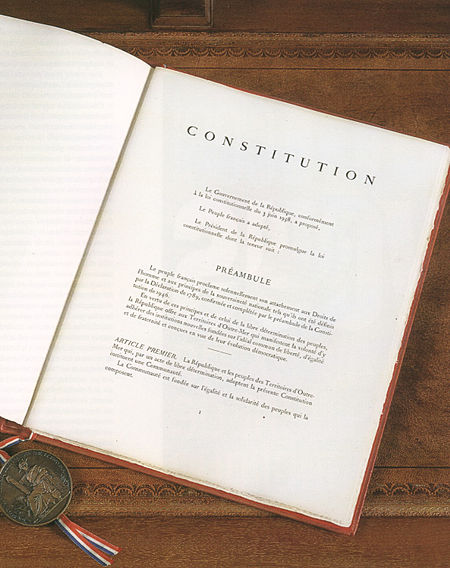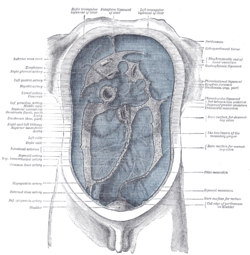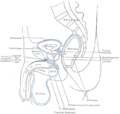Peritoneum
| |||||||||||||||||||||||||||||||||||||||||||||||||||||||||||||||||||||||||||||||||||||||||||||||||||||||||||||||||||||||||||||||||||||||||||||||||||||||||||||||||||||||||||||||||||||||||||||||||||||||||
Read other articles:

Lake in Italy and Switzerland Lake MaggioreLago Maggiore (Italian)Verbano (Italian)Lagh Maggior (Lombard)Lagh Magior (Piedmontese)View of Lake Maggiore towards the Alps and Monte Rosa from above LavenoLocationLombardy and Piedmont, Italy Ticino, SwitzerlandCoordinates46°05′53″N 08°42′53″E / 46.09806°N 8.71472°E / 46.09806; 8.71472Primary inflowsTicino, Maggia, Toce, TresaPrimary outflowsTicinoCatchment area6,599 km2 (2,548 sq …

Radio station in West Point, GeorgiaWCJM-FMWest Point, GeorgiaFrequency100.9 MHzBrandingThe BullProgrammingFormatCountryAffiliationsWestwood OneOwnershipOwneriHeartMedia, Inc.(iHM Licenses, LLC)Sister stationsWKKR, WMXA, WPCH, WTLM, WZMGHistoryFirst air dateJuly 18, 1966 (57 years ago) (1966-07-18)[1]Former call signsWBMK-FM (CP, 1963-1966)[2]WCJM (1966–1994)Technical informationFacility ID54863ClassAERP5,800 wattsHAAT100 meters (330 ft)Transmitter coordinate…

West-east street in Manhattan, New York 95th StreetThe House of the Redeemer in 2008, located at Fifth Avenue and East 95th StreetMaintained byNYCDOTLength1.3 mi (2.1 km)[1]Width60 feet (18.29 m)LocationManhattanCoordinates40°47′14″N 73°57′21″W / 40.7871°N 73.9559°W / 40.7871; -73.9559West end Henry Hudson Parkway / NY 9A / Riverside Drive in Upper West SideEast endFirst Avenue in YorkvilleNorth96th StreetSouth94…

Major schools of medieaval Chinese Chan Buddhism Part of a series onZen Buddhism Main articles Zen Chinese Chan Japanese Zen Korean Seon Vietnamese Thiền Zen in the United States Teachings Emptiness Bodhisattva ideal Consciousness-only Buddha-nature Buddhahood One Vehicle Zen and Sutras Doctrinal background of Zen Kenshō Satori Sudden Enlightenment Ten Ox-Herding Pictures Five ranks of Tozan Practices Zazen Six Perfections Bodhisattva vow Bodhisattva Precepts Shikantaza Sesshin Dhāraṇī Wa…

Manon BakkerInformationsNaissance 15 juillet 1999 (24 ans)NunspeetNationalité néerlandaiseÉquipes actuelles Fenix-Deceuninck Development Team (route)Crelan-Corendon (cyclo-cross)Équipes UCI en cyclisme sur route 2020-3.2021Ciclismo Mundial3.2021-2022Plantur-Pura2023Fenix-Deceuninck Continental2024-Fenix-Deceuninck Development TeamÉquipes cyclo-cross 2018Experza-Footlogix2019Équipe cycliste Experza-Footlogix2020-8.2022Iko-Crelan9.2022-8.2023Crelan-Fristads9.2023-Crelan-Corendonmodifier…

Rahul RawailLahir1951 (umur 72–73)Tempat tinggalBandra, Maharashtra, India[1]KebangsaanIndianPekerjaanSutradara filmTahun aktif1980–sekarang Rahul Rawail adalah seorang sutradara film Bollywood yang terkenal karena film-filmnya, seperti Love Story (1981), Betaab (1983), Arjun (1985), Dacait (1987), Anjaam (1994), Arjun Pandit (1999) dan yang paling baru Jo Bole So Nihaal (2005). Ia dinominasikan Penghargaan Filmfare untuk Sutradara Terbaik sebanyak dua kali.[butuh r…

Enduring LovePoster teaterikalSutradaraRoger MichellProduserKevin LoaderDitulis olehJoe PenhallIan McEwan (novel)PemeranDaniel CraigRhys IfansSamantha MortonBill NighyPenata musikJeremy SamsDistributorPathe PicturesTanggal rilis2004Durasi100 menitBahasaInggris Enduring Love merupakan sebuah film Inggris yang dirilis tahun 2004 yang disutradarai oleh Roger Michell dengan penulis scenario Joe Penhall. Film ini berbasis dari novel berjudul sama yang ditulis oleh Ian McEwan. Film ini menampilk…

Medical conditionBaller–Gerold syndromeOther namesCraniosynostosis-radial aplasia syndrome, Craniosynostosis with radial defectsThe inheritance pattern of Baller-Gerold SyndromeFrequencyfewer than 1 per million people[1] Baller–Gerold syndrome (BGS) is a rare genetic syndrome that involves premature fusion of the skull bones and malformations of facial, forearm and hand bones.[1] The symptoms of Baller–Gerold syndrome overlap with features of a few other genetics disorders:…

Facility for sound recording This article possibly contains original research. Please improve it by verifying the claims made and adding inline citations. Statements consisting only of original research should be removed. (July 2017) (Learn how and when to remove this message) Control room at the Tec de Monterrey, Mexico City Campus An audio production facility at An-Najah National University A recording studio is a specialized facility for recording and mixing of instrumental or vocal musical p…

Artikel ini bukan mengenai Tieluohan, jenis lain teh oolong dari provinsi Fujian. Tieguanyin鐵觀音JenisOolongNama lainIron Goddess, Iron Guanyin, Ti Kuan Yin, Tiet Kwun YumTempat asalKabupaten Anxi, Fujian, Tiongkok dan lainnyaSuhu90–95 °C Patung Guanyin di Gunung Putuo, Zhejiang, Tiongkok Tieguanyin (Hanzi sederhana: 铁观音; Hanzi tradisional: 鐵觀音; Pinyin: tiěguānyīn; Yale (Bahasa Kanton): titgūnyām; Pe̍h-ōe-jī: Thih-koan-im) adalah sebuah ragam t…

هذه المقالة يتيمة إذ تصل إليها مقالات أخرى قليلة جدًا. فضلًا، ساعد بإضافة وصلة إليها في مقالات متعلقة بها. (مارس 2016) سوق الموردة بعض المحال القديمة بسوق الموردة شرق سوق الموردة سوق الموردة اقدم هذه الأسواق في أم درمان، عقود مرت على سوق الموردة الذي يرجع تاريخه إلى ما قبل الحكم…

Village in Gaza, Mandatory Palestineal-Jiyya الجيةal-Jeya, al-Jiya, Ed-Deir, EjjehVillageEtymology: water collector[1][2] 1870s map 1940s map modern map 1940s with modern overlay map A series of historical maps of the area around Al-Jiyya (click the buttons)al-JiyyaLocation within Mandatory PalestineCoordinates: 31°37′46″N 34°35′53″E / 31.62944°N 34.59806°E / 31.62944; 34.59806Palestine grid111/115Geopolitical entityMandatory Palestin…

F.VIII Fokker F.VIII of KLM airline Role AirlinerType of aircraft Manufacturer Fokker Designer Reinhold Platz First flight 12 March 1927; 97 years ago (1927-03-12) Status Retired Primary users KLMMalert Number built 11 Developed from Fokker F.VII The Fokker F.VIII (or F.8) was a large twin-engined airliner designed and produced by the Dutch aircraft manufacturer Fokker in the 1920s. It was similar overall to the Fokker F.VII which was trimotor, but the F.VIII was not a tri…

Person entitled to bear a coat of arms For other uses, see Armiger (disambiguation). Part of a series onHeraldic achievement External devices in addition to the central coat of arms Escutcheon Field Supporter Crest Torse Mantling Helmet Crown Compartment Charge Motto (or slogan) Coat of arms Heraldry portalvte In heraldry, an armiger is a person entitled to use a heraldic achievement (e.g., bear arms, an armour-bearer) either by hereditary right, grant, matriculation, or assumption of arms. …

2004 studio album by Kenny ChesneyWhen the Sun Goes DownStudio album by Kenny ChesneyReleasedFebruary 3, 2004Recorded2003–04GenreCountryLength45:13LabelBNA RecordsProducerBuddy CannonKenny ChesneyKenny Chesney chronology All I Want for Christmas Is a Real Good Tan(2003) When the Sun Goes Down(2004) Be as You Are (Songs from an Old Blue Chair)(2005) Singles from When the Sun Goes Down There Goes My LifeReleased: October 20, 2003 When the Sun Goes DownReleased: February 2, 2004 I Go Back…

Unincorporated territory of the U.S., in the South Pacific See also: Index of American Samoa-related articles The Flag of American SamoaThe Seal of American Samoa The location of American Samoa The following outline is provided as an overview of and topical guide to American Samoa: American Samoa – unincorporated territory located in the South Pacific Ocean southeast of the Independent State of Samoa.[1] The main (largest and most populous) island is Tutuila, with the Manuʻa Islan…

Castello di BelcaroPortone di ingresso del castelloUbicazioneStato attuale Italia RegioneToscana CittàSiena IndirizzoStrada Terrensano e Belcaro, 32 Coordinate43°18′25.31″N 11°17′26.56″E43°18′25.31″N, 11°17′26.56″E Informazioni generaliTipoCastello medievale - villa Inizio costruzioneXII secolo VisitabilePrimo lunedì del mese[1] www.regione.toscana.it voci di architetture militari presenti su Wikipedia Modifica dati su Wikidata · Manuale Il castello di Be…

Cet article est une ébauche concernant le droit français. Vous pouvez partager vos connaissances en l’améliorant (comment ?) selon les recommandations des projets correspondants. Article 73 de la Constitution du 4 octobre 1958 Données clés Présentation Pays France Langue(s) officielle(s) Français Type Article de la Constitution Adoption et entrée en vigueur Législature IIIe législature de la Quatrième République française Gouvernement Charles de Gaulle (3e) Promulgation 4 oct…

Pour les articles homonymes, voir Jason Smith et Smith. Jason Smith Fonctions Représentant des États-Unis En fonction depuis le 4 juin 2013(11 ans, 1 mois et 18 jours) Élection 4 juin 2013 Réélection 4 novembre 20148 novembre 20166 novembre 20183 novembre 20208 novembre 2022 Circonscription 8e district du Missouri Législature 113e, 114e, 115e, 116e, 117e et 118e Prédécesseur Jo Ann Emerson Biographie Nom de naissance Jason Thomas Smith Date de naissance 16 juin 1980 (…

Province of Spain Province in Valencian Community, SpainCastellón Provincia de Castellón (Spanish)Província de Castelló (Valencian)ProvinceProvince of Castellón Coat of armsMap of Spain with Castelló highlightedCoordinates: 40°10′N 0°10′W / 40.167°N 0.167°W / 40.167; -0.167CountrySpainAutonomous communityValencian CommunityCapitalCastellón de la PlanaGovernment • PresidentJosep Pasqual Martí García (PSPV-PSOE)Area • Total…







![Cytology of the normal mesothelial cells that line the peritoneum, with typical features.[9] Wright's stain](http://upload.wikimedia.org/wikipedia/commons/thumb/8/89/Cytology_of_normal_mesothelium.jpg/120px-Cytology_of_normal_mesothelium.jpg)
